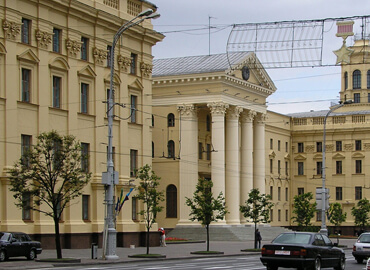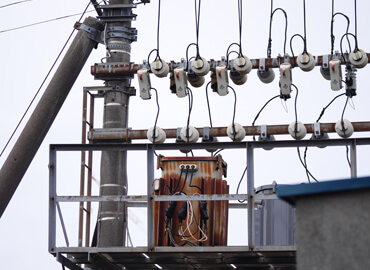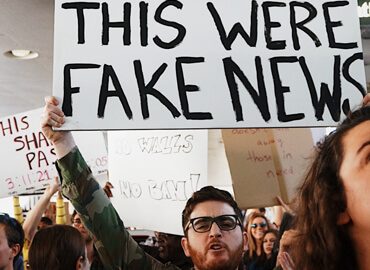Changes in the main pro-Kremlin propaganda narratives in Belarus before and after the start of Russian aggression against Ukraine.
This study aims to trace the changes that have arisen in pro-Kremlin propaganda in Belarus due to the preparation, launch, and conducting of Russia’s large-scale armed invasion of Ukraine, which began on February 24, 2022. We set out to determine whether, against the backdrop of preparations for war and during the aggression itself, there had been a change or disappearance of pre-existing story and semantic lines (narratives) of propaganda and whether new narratives have appeared. Through the study, we analyzed statements in Belarusian and Russian propaganda media aimed at Belarusian audiences during the first three quarters of 2022, and these data were compared with the results of the previous period of our observation – after the start of mass protests in Belarus and until the moment of direct preparations for the aggression against Ukraine (August 2020 – December 2021).
As the start of the attack on Ukraine neared, the Kremlin’s rhetoric became more and more aggressive. Beginning in 2014 – that is, from the time of the annexation of Crimea and the beginning of the armed conflict in Donbass – the main resources of propaganda have been directed towards the task of ideological mobilization of Russian society in the face of “external threats.” This rhetoric of hatred reached its apogee in November-December 2021, when the Kremlin’s plans to escalate the military confrontation finally became clear.
The efforts of propaganda media in Russia at that time were aimed at justifying aggression, maintaining a “hysterical” level of public unity, and promoting the Kremlin’s ultimatums and clearly impossible demands on Europe and the world.
At the same time, starting from September 2020, after the “landing” of the “RT squad” in Minsk, Belarusian media almost totally became synchronized with Russian propaganda and followed in the wake of the main Kremlin lines. Nevertheless, local, Belarusian stories – foremost, the fight against “internal enemies” – independent opposition, the media, and participants in mass protests – dominated the Belarusian media space. With the preparing for and beginning of the war the situation changed.
According to iSANS research, at the end of 2020, after the synchronization of the Belarusian media with Russian propaganda, the global narratives (meta-narratives) of pro-Kremlin propaganda in Belarus included the following:
- Narratives about Belarus, consisting of claims that Belarus is part of the “Russian world” and Belarusians are part of the Russian people; the successful future of Belarus is possible only in alliance with Russia or as part of it; the history of Belarus is connected with Russian history or is alien and disgraceful; Belarusian statehood, language, and culture are inferior; Belarusian historical symbols are pro-Nazi and shameful; and the Belarusian opposition and activists are puppets of the West, nationalists, and terrorists.
- Narratives about Ukraine that exploited the primary “anti-Maidan” attitudes that maintain Ukraine is under external control and at the mercy of Western puppets; that it is run by a “Nazi junta” that came to power as a result of a coup; Ukraine does not have legitimacy and that it is an artificially created or “fake state”; without an alliance with Russia, Ukraine is doomed to collapse and has no prospects for statehood; Russia has nothing to do with the conflict in the Donbas; the annexation of Crimea was justified and legitimate; there is a “civil war” in Ukraine; Ukraine is forming aggressive plans against Belarus; Ukraine shot down the Malaysian Boeing, etc.
- Narratives about Poland and the Baltic countries promoting messages about imperialism and Poland’s expansionist plans, Russophobia and Poland and the Baltic states’ anti-Russian plans, socio-economic deterioration, totalitarianism, and neo-Nazism in Poland and the Baltic countries, and that these countries are puppets of Brussels, NATO, and the U.S.
- Anti-Western narratives based on the myth that in Western countries there is Russophobia and fascist tendencies; the “collective West” seeking to weaken, divide, or destroy Belarus, Russia, and Ukraine; the financing of “color revolution,” opposition and protests in Belarus; the West undermining the Belarusian-Russian alliance and attacking Russia through Belarus; that there is a socio-economic crisis and moral decline in the West; that the EU and EU countries are vassals of the U.S. and NATO; and that the West is split, which will lead to its inevitable collapse.
With the onset of Russian aggression against Ukraine, these meta-narratives generally survived, but underwent a serious transformation: for example, Belarusian stories were pushed out to the periphery of the media agenda by pro-Russian stories. The propaganda emphasis on opposition leaders and mass protests lost its “edge.” From that point moving forward, the locus of hatred has been firmly rooted in Ukraine and the West.
The old storylines were replaced by new ones, the appearance of which became possible after the start of the war. Among them, foremost, has been the justification of Russian aggression and Belarus’s complicity in it and the justification of the need for a “military alliance” with Russia, for which Belarus is a “reliable shield” of its western borders. Also prominent have been the discrediting of Ukraine, threats against it in response to “attempts by Ukraine and Poland” to strike at Belarus and Russia, allegations that the West, not Russia, is to blame for starting the war, the energy crisis in Europe, the suppression of Russian war crimes, the downplaying of successes of the Ukrainian Armed Forces, etc.
Материал доступен на русском языке: ОТ РИТОРИКИ «КРЕПОСТИ» К РИТОРИКЕ ВОЙНЫ











